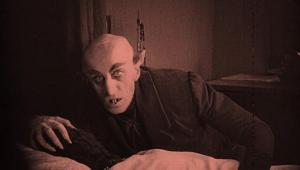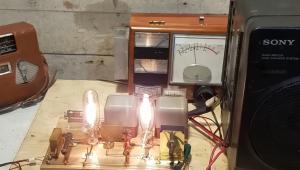Fantastic article. It's a shame. Even all those highly-praised bluetooth boomboxes like Sonos, etc don't help the cause. People don't know what they're missing.
The Rise and Fall of Stereo (Part Two)

As an audiophile, it’s difficult for me to express my dismay as I see stereo practically becoming a historical footnote. I feel like a doctor in the tropics where malaria has finally been eradicated. What a tremendous outcome. Then, incomprehensibly, people stop using insecticides and nets. The mosquitoes come back, along with malaria. What happened?
Let me try to explain. Stereo is much, much more than two speakers. It is a sophisticated technique that encodes and reproduces signals containing information on the spatial properties of a soundfield. To properly decode the information and reproduce the soundfield, the listener must be properly positioned relative to the stereo speakers. As every audiophile knows, the subtended angle should be approximately 60 degrees or more. Look around you; on an everyday basis, how often do you see people listening to speakers at an angle of 60 degrees?
Distortion can take many forms. The distortion from a blown speaker is easy to hear. In a “stereo” soundbar, with the tweeters being the only independent speakers, and placed a foot apart, the abysmal spatial response is easy to hear. Because it fails to properly decode the encoded stereo signal, the playback quality of the “stereo” system is quite poor. And make no mistake—spatial distortion is every bit as real as any other audio distortion.
I guarantee you that many kids have never heard one of the most beneficial audio innovations — stereo separation.
Monaural absolutely, positively cannot decode stereo. And neither can a “stereo” system with tightly spaced speakers. We all lived through the sad era of “stereo” boomboxes, but now the list of “stereo” systems is growing exponentially. “Stereo” soundbars, “stereo” Bluetooth speakers, “stereo” smartphones—these products now dominate music playback. They are stereo in name only. In terms of audio fidelity, specifically their spatial fidelity, they are an abomination. Compared with stereo, listening to tightly spaced “stereo” speakers is like listening to an instrumental-only version of an Adele album.But what about headphones? They provide awesome stereo, right? Well, no. Headphones provide terrible stereo playback. In fact, they don’t provide stereo at all; they are binaural devices. In stereo, each ear hears the other channel; this interaural crosstalk is a key part of stereo decoding. Headphones are what stereo speakers would sound like if you sat in front of them with an infinitely large piece of soundproof plywood bisecting your head. Headphones massively distort spatiality.
It’s a moot point, but sadly I blame home theater systems for this debacle. They introduced listeners to a center channel. Soon, people assumed that a center-channel “stereo” soundbar worked just fine and they didn’t need the other 4.1 speakers. Disaster. I also blame smartphones. Smartphones with “stereo” speakers or headphone playback are the worst thing that ever happened to audio (and video) playback.
I guarantee you that many kids have never heard actual stereo. Raised in a house with a big TV and a soundbar, smartphones, and lots of Bluetooth speakers and headphones, they have never heard one of the most beneficial audio innovations—stereo separation.
Is there hope? Can stereo make a comeback? I don’t know. Sound systems in cars are a ray of light. But I can tell you that I’m pretty depressed. At this point, I’d almost prefer to live in the lo-fi hell of true monaural, rather than the distorted and duplicitous world of “stereo.”
- Log in or register to post comments

Sonos doesn't use Bluetooth, it can do lossless 16/48 streaming. It can also form a stereo pair with any of the two speakers to do a really nice simple stereo system. Perhaps you should try Sonos so you find out what you're missing.

Bluetooth or not, my point stands that a good chunk of the Sonos systems are just glorified boomboxes with very little (if any) stereo separation. Their method of connection (bluetooth, wifi, etc) is irrelevant.
For the record, I'm not missing anything with my tower speakers placed a nice distance apart... Nothing I'd ever replace with a Sonos (or any other portable system).

Anytime I see an article about wireless speaker(s), I just skip it. Today's product trends emphasize convenience and cater to the majority who won't know a good stereo if it hit them in the ear drum!!!

Are you aware that on many of these systems, you can use two speakers to have a true stereo image? Sonos, Denon, Definitive Technology, Polk, Bluesound, Raumfeld, Yamaha, and many others make plenty of wireless speakers that work in stereo and will stream lossless audio from Tidal or your local library. Polk, Definitive Technology, Anthem, and Bluesound ones will even stream full resolution 24/96 local audio files without any compression. Additionally there is a whole raft of speakers with Google Cast built-in coming that support stereo pairing, hi-res audio, and whole home audio.
Wireless doesn't mean non-stereo or lossy audio, but you'd have to stop skipping all those articles to know that.

who cares if people listen on smartphones etc. I don't care.

We should care when the majority of people do things that way. When they do, that's where companies start making the money. When they make more money there than in the markets for the technology that we audiophiles adore, then we audiophiles will suffer when companies shift their focus and cater to where the most money is. Just look at all of the tech companies who are shifting their focus to mobile and cloud.

While Channel separation and cross talk are the most obvious, don't forget about reflections- just like you're hearing reflections off the walls/barriers/objects in a live performance, You need that in a reproduced performance, hence, I think the room treatment and sound deadening material in listening rooms is just as bad as listening to headphones IMO.


You make an interesting observation on the inability of headphones to faithfully reproduce true interaural stereo. Yet every issue of S&V lauds the latest tech in headphones and headphone amplifiers. Home theater AV receivers make broad use of sound field processors. Has any manufacturer sought to incorporate sound field effects to deliver a virtual interaural sound field for the binaural headphone output?

I've been writing about a similar topic since 09 at Positive Feedback: In my What is the Future of the High End series... But is it STEREO that needs saving? I think, despite its delivery mechanism, it's the music that droves many of us into becoming audiophiles! With headphone culture, or, "personal audio" as its called we have an opportunity we've NEVER has before in the high-end!!!!






























































